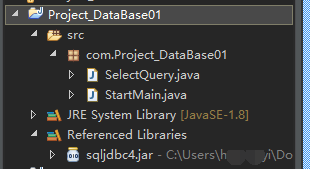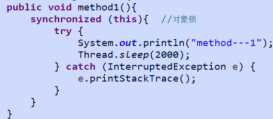PipedWriter和PipedReader源码分析
1. PipedWriter 源码(基于jdk1.7.40)
|
1
2
3
4
5
6
7
8
9
10
11
12
13
14
15
16
17
18
19
20
21
22
23
24
25
26
27
28
29
30
31
32
33
34
35
36
37
38
39
40
41
42
43
44
45
46
47
48
49
50
51
52
53
54
55
56
57
58
59
60
61
62
63
64
65
66
67
68
69
|
package java.io; public class PipedWriter extends Writer { // 与PipedWriter通信的PipedReader对象 private PipedReader sink; // PipedWriter的关闭标记 private boolean closed = false; // 构造函数,指定配对的PipedReader public PipedWriter(PipedReader snk) throws IOException { connect(snk); } // 构造函数 public PipedWriter() { } // 将“PipedWriter” 和 “PipedReader”连接。 public synchronized void connect(PipedReader snk) throws IOException { if (snk == null) { throw new NullPointerException(); } else if (sink != null || snk.connected) { throw new IOException("Already connected"); } else if (snk.closedByReader || closed) { throw new IOException("Pipe closed"); } sink = snk; snk.in = -1; snk.out = 0; // 设置“PipedReader”和“PipedWriter”为已连接状态 // connected是PipedReader中定义的,用于表示“PipedReader和PipedWriter”是否已经连接 snk.connected = true; } // 将一个字符c写入“PipedWriter”中。 // 将c写入“PipedWriter”之后,它会将c传输给“PipedReader” public void write(int c) throws IOException { if (sink == null) { throw new IOException("Pipe not connected"); } sink.receive(c); } // 将字符数组b写入“PipedWriter”中。 // 将数组b写入“PipedWriter”之后,它会将其传输给“PipedReader” public void write(char cbuf[], int off, int len) throws IOException { if (sink == null) { throw new IOException("Pipe not connected"); } else if ((off | len | (off + len) | (cbuf.length - (off + len))) < ) { throw new IndexOutOfBoundsException(); } sink.receive(cbuf, off, len); } // 清空“PipedWriter”。 // 这里会调用“PipedReader”的notifyAll(); // 目的是让“PipedReader”放弃对当前资源的占有,让其它的等待线程(等待读取PipedWriter的线程)读取“PipedWriter”的值。 public synchronized void flush() throws IOException { if (sink != null) { if (sink.closedByReader || closed) { throw new IOException("Pipe closed"); } synchronized (sink) { sink.notifyAll(); } } } // 关闭“PipedWriter”。 // 关闭之后,会调用receivedLast()通知“PipedReader”它已经关闭。 public void close() throws IOException { closed = true; if (sink != null) { sink.receivedLast(); } } } |
2. PipedReader 源码(基于jdk1.7.40)
|
1
2
3
4
5
6
7
8
9
10
11
12
13
14
15
16
17
18
19
20
21
22
23
24
25
26
27
28
29
30
31
32
33
34
35
36
37
38
39
40
41
42
43
44
45
46
47
48
49
50
51
52
53
54
55
56
57
58
59
60
61
62
63
64
65
66
67
68
69
70
71
72
73
74
75
76
77
78
79
80
81
82
83
84
85
86
87
88
89
90
91
92
93
94
95
96
97
98
99
100
101
102
103
104
105
106
107
108
109
110
111
112
113
114
115
116
117
118
119
120
121
122
123
124
125
126
127
128
129
130
131
132
133
134
135
136
137
138
139
140
141
142
143
144
145
146
147
148
149
150
151
152
153
154
155
156
157
158
159
160
161
162
163
164
165
166
167
168
169
170
171
172
173
174
175
176
177
178
179
180
181
182
183
184
185
186
187
188
189
190
191
|
package java.io; public class PipedReader extends Reader { // “PipedWriter”是否关闭的标记 boolean closedByWriter = false; // “PipedReader”是否关闭的标记 boolean closedByReader = false; // “PipedReader”与“PipedWriter”是否连接的标记 // 它在PipedWriter的connect()连接函数中被设置为true boolean connected = false; Thread readSide; // 读取“管道”数据的线程 Thread writeSide; // 向“管道”写入数据的线程 // “管道”的默认大小 private static final int DEFAULT_PIPE_SIZE = 1024; // 缓冲区 char buffer[]; //下一个写入字符的位置。in==out代表满,说明“写入的数据”全部被读取了。 int in = -; //下一个读取字符的位置。in==out代表满,说明“写入的数据”全部被读取了。 int out = ; // 构造函数:指定与“PipedReader”关联的“PipedWriter” public PipedReader(PipedWriter src) throws IOException { this(src, DEFAULT_PIPE_SIZE); } // 构造函数:指定与“PipedReader”关联的“PipedWriter”,以及“缓冲区大小” public PipedReader(PipedWriter src, int pipeSize) throws IOException { initPipe(pipeSize); connect(src); } // 构造函数:默认缓冲区大小是1024字符 public PipedReader() { initPipe(DEFAULT_PIPE_SIZE); } // 构造函数:指定缓冲区大小是pipeSize public PipedReader(int pipeSize) { initPipe(pipeSize); } // 初始化“管道”:新建缓冲区大小 private void initPipe(int pipeSize) { if (pipeSize <= 0) { throw new IllegalArgumentException("Pipe size <= 0"); } buffer = new char[pipeSize]; } // 将“PipedReader”和“PipedWriter”绑定。 // 实际上,这里调用的是PipedWriter的connect()函数 public void connect(PipedWriter src) throws IOException { src.connect(this); } // 接收int类型的数据b。 // 它只会在PipedWriter的write(int b)中会被调用 synchronized void receive(int c) throws IOException { // 检查管道状态 if (!connected) { throw new IOException("Pipe not connected"); } else if (closedByWriter || closedByReader) { throw new IOException("Pipe closed"); } else if (readSide != null && !readSide.isAlive()) { throw new IOException("Read end dead"); } // 获取“写入管道”的线程 writeSide = Thread.currentThread(); // 如果“管道中被读取的数据,等于写入管道的数据”时, // 则每隔1000ms检查“管道状态”,并唤醒管道操作:若有“读取管道数据线程被阻塞”,则唤醒该线程。 while (in == out) { if ((readSide != null) && !readSide.isAlive()) { throw new IOException("Pipe broken"); } /* full: kick any waiting readers */ notifyAll(); try { wait(1000); } catch (InterruptedException ex) { throw new java.io.InterruptedIOException(); } } if (in < 0) { in = 0; out = 0; } buffer[in++] = (char) c; if (in >= buffer.length) { in = 0; } } // 接收字符数组b。 synchronized void receive(char c[], int off, int len) throws IOException { while (--len >= ) { receive(c[off++]); } } // 当PipedWriter被关闭时,被调用 synchronized void receivedLast() { closedByWriter = true; notifyAll(); } // 从管道(的缓冲)中读取一个字符,并将其转换成int类型 public synchronized int read() throws IOException { if (!connected) { throw new IOException("Pipe not connected"); } else if (closedByReader) { throw new IOException("Pipe closed"); } else if (writeSide != null && !writeSide.isAlive() && !closedByWriter && (in < )) { throw new IOException("Write end dead"); } readSide = Thread.currentThread(); int trials = 2; while (in < 0) { if (closedByWriter) { /* closed by writer, return EOF */ return -1; } if ((writeSide != null) && (!writeSide.isAlive()) && (--trials < )) { throw new IOException("Pipe broken"); } /* might be a writer waiting */ notifyAll(); try { wait(1000); } catch (InterruptedException ex) { throw new java.io.InterruptedIOException(); } } int ret = buffer[out++]; if (out >= buffer.length) { out = 0; } if (in == out) { /* now empty */ in = -1; } return ret; } // 从管道(的缓冲)中读取数据,并将其存入到数组b中 public synchronized int read(char cbuf[], int off, int len) throws IOException { if (!connected) { throw new IOException("Pipe not connected"); } else if (closedByReader) { throw new IOException("Pipe closed"); } else if (writeSide != null && !writeSide.isAlive() && !closedByWriter && (in < 0)) { throw new IOException("Write end dead"); } if ((off < 0) || (off > cbuf.length) || (len < 0) || ((off + len) > cbuf.length) || ((off + len) < 0)) { throw new IndexOutOfBoundsException(); } else if (len == 0) { return 0; } /* possibly wait on the first character */ int c = read(); if (c < 0) { return -1; } cbuf[off] = (char)c; int rlen = 1; while ((in >= 0) && (--len > 0)) { cbuf[off + rlen] = buffer[out++]; rlen++; if (out >= buffer.length) { out = 0; } if (in == out) { /* now empty */ in = -; } } return rlen; } // 是否能从管道中读取下一个数据 public synchronized boolean ready() throws IOException { if (!connected) { throw new IOException("Pipe not connected"); } else if (closedByReader) { throw new IOException("Pipe closed"); } else if (writeSide != null && !writeSide.isAlive() && !closedByWriter && (in < )) { throw new IOException("Write end dead"); } if (in < 0) { return false; } else { return true; } } // 关闭PipedReader public void close() throws IOException { in = -; closedByReader = true; } } |
示例
下面,我们看看多线程中通过PipedWriter和PipedReader通信的例子。例子中包括3个类:Receiver.java, Sender.java 和 PipeTest.java
Receiver.java的代码如下:
|
1
2
3
4
5
6
7
8
9
10
11
12
13
14
15
16
17
18
19
20
21
22
23
24
25
26
27
28
29
30
31
32
33
34
35
36
37
38
39
40
41
42
43
44
45
46
47
48
49
50
51
52
53
54
55
56
57
58
59
60
61
62
63
64
65
66
67
68
69
70
71
72
73
74
75
76
77
78
79
80
81
82
83
84
85
86
87
88
89
90
91
92
93
94
95
96
97
98
99
100
101
102
103
104
105
106
107
108
|
import java.io.IOException; import java.io.PipedReader; @SuppressWarnings("all") /** * 接收者线程 */ public class Receiver extends Thread { // 管道输入流对象。 // 它和“管道输出流(PipedWriter)”对象绑定, // 从而可以接收“管道输出流”的数据,再让用户读取。 private PipedReader in = new PipedReader(); // 获得“管道输入流对象” public PipedReader getReader(){ return in; } @Override public void run(){ readMessageOnce() ; //readMessageContinued() ; } // 从“管道输入流”中读取次数据 public void readMessageOnce(){ // 虽然buf的大小是2048个字符,但最多只会从“管道输入流”中读取1024个字符。 // 因为,“管道输入流”的缓冲区大小默认只有1024个字符。 char[] buf = new char[2048]; try { int len = in.read(buf); System.out.println(new String(buf,0,len)); in.close(); } catch (IOException e) { e.printStackTrace(); } } // 从“管道输入流”读取>1024个字符时,就停止读取 public void readMessageContinued(){ int total=0; while(true) { char[] buf = new char[]; try { int len = in.read(buf); total += len; System.out.println(new String(buf,,len)); // 若读取的字符总数>1024,则退出循环。 if (total > 1024) break; } catch (IOException e) { e.printStackTrace(); } } try { in.close(); } catch (IOException e) { e.printStackTrace(); } } } Sender.java的代码如下: import java.io.IOException; import java.io.PipedWriter; @SuppressWarnings("all") /** * 发送者线程 */ public class Sender extends Thread { // 管道输出流对象。 // 它和“管道输入流(PipedReader)”对象绑定, // 从而可以将数据发送给“管道输入流”的数据,然后用户可以从“管道输入流”读取数据。 private PipedWriter out = new PipedWriter(); // 获得“管道输出流”对象 public PipedWriter getWriter(){ return out; } @Override public void run(){ writeShortMessage(); //writeLongMessage(); } // 向“管道输出流”中写入一则较简短的消息:"this is a short message" private void writeShortMessage() { String strInfo = "this is a short message" ; try { out.write(strInfo.toCharArray()); out.close(); } catch (IOException e) { e.printStackTrace(); } } // 向“管道输出流”中写入一则较长的消息 private void writeLongMessage() { StringBuilder sb = new StringBuilder(); // 通过for循环写入1020个字符 for (int i=0; i<102; i++) sb.append("0123456789"); // 再写入26个字符。 sb.append("abcdefghijklmnopqrstuvwxyz"); // str的总长度是1020+26=1046个字符 String str = sb.toString(); try { // 将1046个字符写入到“管道输出流”中 out.write(str); out.close(); } catch (IOException e) { e.printStackTrace(); } } } |
PipeTest.java的代码如下:
|
1
2
3
4
5
6
7
8
9
10
11
12
13
14
15
16
17
18
19
20
21
22
23
24
25
26
27
28
29
30
|
import java.io.PipedReader;import java.io.PipedWriter;import java.io.IOException;@SuppressWarnings("all") /** * 管道输入流和管道输出流的交互程序 */public class PipeTest { public static void main(String[] args) { Sender t1 = new Sender(); Receiver t2 = new Receiver(); PipedWriter out = t1.getWriter(); PipedReader in = t2.getReader(); try { //管道连接。下面句话的本质是一样。 //out.connect(in); in.connect(out); /** * Thread类的START方法: * 使该线程开始执行;Java 虚拟机调用该线程的 run 方法。 * 结果是两个线程并发地运行;当前线程(从调用返回给 start 方法)和另一个线程(执行其 run 方法)。 * 多次启动一个线程是非法的。特别是当线程已经结束执行后,不能再重新启动。 */ t.start(); t.start(); } catch (IOException e) { e.printStackTrace(); } }} |
运行结果:
|
1
|
this is a short message |
结果说明:
(01) in.connect(out);
它的作用是将“管道输入流”和“管道输出流”关联起来。查看PipedWriter.java和PipedReader.java中connect()的源码;我们知道 out.connect(in); 等价于 in.connect(out);
(02)
t1.start(); // 启动“Sender”线程
t2.start(); // 启动“Receiver”线程
先查看Sender.java的源码,线程启动后执行run()函数;在Sender.java的run()中,调用writeShortMessage();
writeShortMessage();的作用就是向“管道输出流”中写入数据"this is a short message" ;这条数据会被“管道输入流”接收到。下面看看这是如何实现的。
先看write(char char的源码。PipedWriter.java继承于Writer.java;Writer.java中write(char c[])的源码如下:
|
1
2
3
|
public void write(char cbuf[]) throws IOException { write(cbuf, 0, cbuf.length);} |
实际上write(char c[])是调用的PipedWriter.java中的write(char c[], int off, int len)函数。查看write(char c[], int off, int len)的源码,我们发现:它会调用 sink.receive(cbuf, off, len); 进一步查看receive(char c[], int off, int len)的定义,我们知道sink.receive(cbuf, off, len)的作用就是:将“管道输出流”中的数据保存到“管道输入流”的缓冲中。而“管道输入流”的缓冲区buffer的默认大小是1024个字符。
至此,我们知道:t1.start()启动Sender线程,而Sender线程会将数据"this is a short message"写入到“管道输出流”;而“管道输出流”又会将该数据传输给“管道输入流”,即而保存在“管道输入流”的缓冲中。
接下来,我们看看“用户如何从‘管道输入流'的缓冲中读取数据”。这实际上就是Receiver线程的动作。
t2.start() 会启动Receiver线程,从而执行Receiver.java的run()函数。查看Receiver.java的源码,我们知道run()调用了readMessageOnce()。
而readMessageOnce()就是调用in.read(buf)从“管道输入流in”中读取数据,并保存到buf中。
通过上面的分析,我们已经知道“管道输入流in”的缓冲中的数据是"this is a short message";因此,buf的数据就是"this is a short message"。
为了加深对管道的理解。我们接着进行下面两个小试验。
试验一:修改Sender.java
将
|
1
2
3
4
|
public void run(){ writeShortMessage(); //writeLongMessage();} |
修改为
|
1
2
3
4
|
public void run(){ //writeShortMessage(); writeLongMessage();} |
运行程序。运行结果如下:
从中,我们看出,程序运行出错!抛出异常 java.io.IOException: Pipe closed
为什么会这样呢?
我分析一下程序流程。
(01) 在PipeTest中,通过in.connect(out)将输入和输出管道连接起来;然后,启动两个线程。t1.start()启动了线程Sender,t2.start()启动了线程Receiver。
(02) Sender线程启动后,通过writeLongMessage()写入数据到“输出管道”,out.write(str.toCharArray())共写入了1046个字符。而根据PipedWriter的源码,PipedWriter的write()函数会调用PipedReader的receive()函数。而观察PipedReader的receive()函数,我们知道,PipedReader会将接受的数据存储缓冲区。仔细观察receive()函数,有如下代码:
|
1
2
3
4
5
6
7
8
9
10
11
12
|
while (in == out) { if ((readSide != null) && !readSide.isAlive()) { throw new IOException("Pipe broken"); } /* full: kick any waiting readers */ notifyAll(); try { wait(1000); } catch (InterruptedException ex) { throw new java.io.InterruptedIOException(); }} |
而in和out的初始值分别是in=-1, out=0;结合上面的while(in==out)。我们知道,它的含义就是,每往管道中写入一个字符,就达到了in==out这个条件。然后,就调用notifyAll(),唤醒“读取管道的线程”。
也就是,每往管道中写入一个字符,都会阻塞式的等待其它线程读取。
然而,PipedReader的缓冲区的默认大小是1024!但是,此时要写入的数据却有1046!所以,一次性最多只能写入1024个字符。
(03) Receiver线程启动后,会调用readMessageOnce()读取管道输入流。读取1024个字符会,会调用close()关闭,管道。
由(02)和(03)的分析可知,Sender要往管道写入1046个字符。其中,前1024个字符(缓冲区容量是1024)能正常写入,并且每写入一个就读取一个。当写入1025个字符时,依然是依次的调用PipedWriter.java中的write();然后,write()中调用PipedReader.java中的receive();在PipedReader.java中,最终又会调用到receive(int c)函数。 而此时,管道输入流已经被关闭,也就是closedByReader为true,所以抛出throw new IOException("Pipe closed")。
我们对“试验一”继续进行修改,解决该问题。
试验二: 在“试验一”的基础上继续修改Receiver.java
将
|
1
2
3
4
|
public void run(){ readMessageOnce() ; //readMessageContinued() ;} |
修改为
|
1
2
3
4
|
public void run(){ //readMessageOnce() ; readMessageContinued() ;} |
此时,程序能正常运行。运行结果为:
01234567890123456789012345678901234567890123456789012345678901234567890123456789012345678901234567890123456789
01234567890123456789012345678901234567890123456789012345678901234567890123456789012345678901234567890123456789
01234567890123456789012345678901234567890123456789012345678901234567890123456789012345678901234567890123456789
01234567890123456789012345678901234567890123456789012345678901234567890123456789012345678901234567890123456789
01234567890123456789012345678901234567890123456789012345678901234567890123456789012345678901234567890123456789
01234567890123456789012345678901234567890123456789012345678901234567890123456789012345678901234567890123456789
01234567890123456789012345678901234567890123456789012345678901234567890123456789012345678901234567890123456789
01234567890123456789012345678901234567890123456789012345678901234567890123456789012345678901234567890123456789
01234567890123456789012345678901234567890123456789012345678901234567890123456789012345678901234567890123456789
012345678901234567890123456789abcd
efghijklmnopqrstuvwxyz
以上所述是小编给大家介绍的PipedWriter和PipedReader源码分析,希望对大家有所帮助,如果大家有任何疑问请给我留言,小编会及时回复大家的。在此也非常感谢大家对服务器之家网站的支持!
















